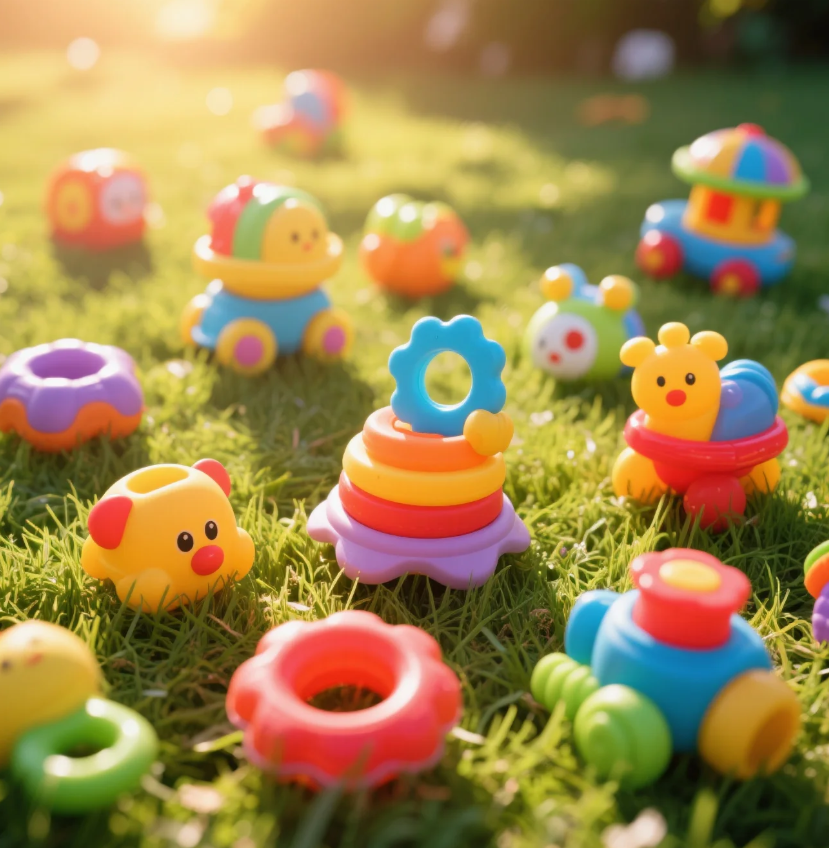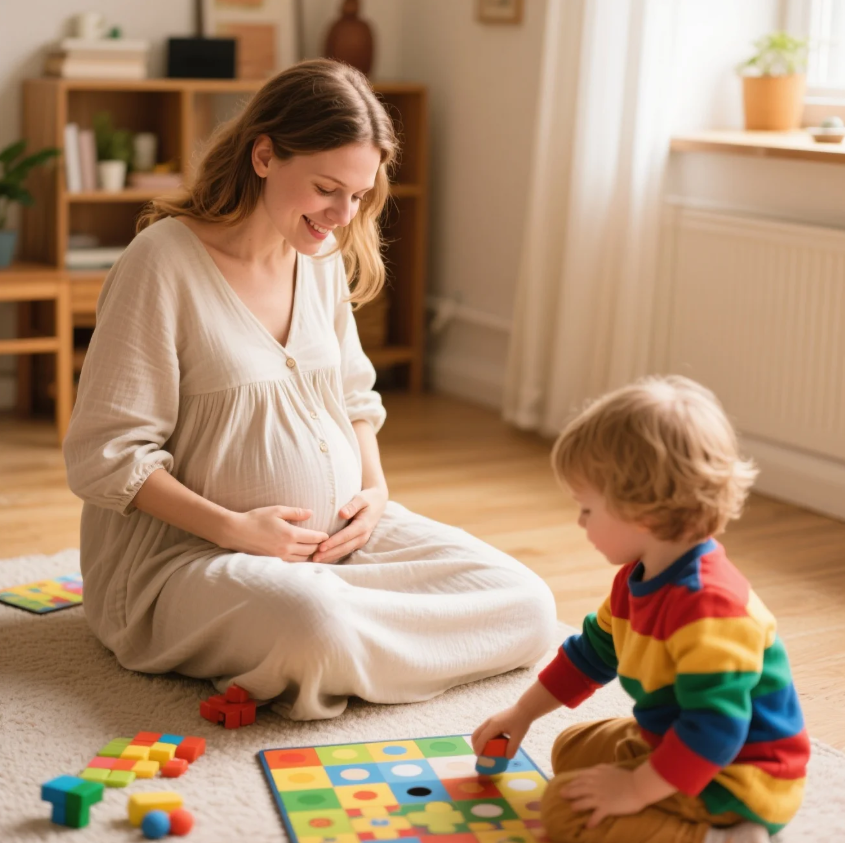Welcoming my niece home from the hospital, I remember bringing her a simple black-and-white soft book for sensory stimulation. When she first laid eyes on it, a tiny smile spread across her face—just seeing those high‑contrast images seemed to comfort her world. That moment showed me that safe baby toys do more than entertain—they build connections, spark development, and bring joy to parents and little ones alike.
Choosing safe baby toys starts with understanding the core principles of toy safety and development. Experts emphasize reading age recommendations closely and avoiding small parts that pose choking hazards—anything under roughly 3 cm could be dangerous for infants . It’s essential to regularly inspect toys for wear and tear, which can create broken edges or loose components . And beyond safety, developmental impact matters—tactile, auditory, visual, and motor‑skill development are all connected to toy design and choice .
For newborns up to three months, sensory baby toys are key. Black-and-white mobiles, soft rattles, and stretchy squeeze toys capture attention and support early visual tracking and auditory recognition. When my friend’s baby turned two months old, she found calm by the crib, eyes following a soft rattle we gifted her. Developmental experts say such toys help begin the journey of neural connections .
As babies grow between three to six months, they begin grasping, bringing toys to their mouth, and showing early curiosity. Teethers, squeezable soft blocks, and tag toys become invaluable. My sister once gifted her son a star‑tag soft toy with crinkle and textured fabrics—he played with it for hours, strengthening hand‑to‑mouth coordination and sensory awareness.
By the 6‑ to 12‑month mark, babies often crawl or pull up, exploring cause and effect through toys. Push‑pull toys, stacking cups, shape-sorters, and baby‑safe musical/activity cubes support motor development and problem-solving. When I visited a friend, her daughter gleefully dropped a stacking ring, watched it tumble, and picked it up again—pure experimentation in action. These are developmental toys for infants at their finest.
Transitioning into toddler years (12–24 months), play becomes more imaginative. Ride‑on toys, walker-balance bikes, and interactive dolls foster gross motor skills, autonomy, and social-emotional learning. I remember gifting the Fisher‑Price Laugh & Learn Smart Stages Puppy during my nephew’s first birthday. He pushed buttons, listened to music, and giggled—an early sign of language engagement and interactive play.
Balancing educational purpose and safety, experts call for a mix of open‑ended play and delicate tech toys—such as wooden blocks, classic dolls, alongside simple musical devices . That’s why I cherish the tactile and timeless quality of wooden cubes and cloth dolls in our toy rotation; they invite creativity and imaginative storytelling.
Age‑appropriate non‑toxic baby toys like BPA‑free silicone teethers, wooden activity cubes, and plush tag toys support parents seeking chemical‑safe options . My friend struggled with eczema in her daughter—when she gifted her a food‑grade silicone tag toy, it brought relief and comfort, and became one of her daughter’s favorite nap companions.
Let’s explore why these hits matter:
Fisher‑Price Laugh & Learn Smart Stages Puppy brings fun and education in one plush companion. With over 9,600 reviews and a 4.8‑star rating, it’s a trusted source for interactive learning—buttons trigger laughter, songs, letters, and phrases. I gifted this to a nephew at Christmas, and watching him press buttons with wonder made me appreciate how high-quality baby toys support language development early on.
LeapFrog Touch & Learn Wooden Activity Cube blends timber durability with interactive audio components. Its tactile buttons and wooden sides support fine motor skills. It’s been part of a neighbor’s playroom for years, growing from gentle taps to deliberate switching of panels—developmental gifts in action.
Melissa & Doug Shape Sorting Cube is a classic, trusted for logical play and shape recognition. So many parents tell me this cube sparks frustration-turned-victory and opening pockets of pride when their toddler triumphs in matching shapes.
Baby Jack & Co Sunshine Lovey Tag Toy offers gentle snuggles, crinkle textures, and stroller-friendly clips. My sister reports her daughter reaches for it at nap times and during car rides—a calming portable friend that taps into tactile comfort and teething relief.
Baby Einstein Glow & Discover Light Bar is a tummy-time essential. The soft lights, buttons, and sounds offer a gentle invitation to lift and engage. Parents I know love how it encourages muscle-strengthening early on without overwhelming stimuli.
Reversible Car Activity Center Toy offers high-contrast visuals perfect for newborns, plus a baby-safe mirror to stimulate early visual development. I gifted this to a friend whose infant eagerly followed the images and giggled at the mirror—comforting engagement in brief car rides.
Cricket 2 Baby Walker Balance Bike is a masterpiece in gross motor support for 12‑24 month olds. Riding it teaches balance, coordination, and independence. A friend stood nearby as her toddler zoomed around—his grin radiated freedom and growth.
Melissa & Doug K’s Kids Flip Fish Toy is tailored for tummy time and sensory play. Soft textures, squeaks, and bright faces help develop upper-body strength and hand-eye coordination. A fellow parent shared how her son rolled to follow the fish—early mobility meets playful curiosity.
Research supports the educational value of such toys: sensory toys contribute to motor, language, and cognitive development across infancy. Activity toys like these foster problem-solving, balance, and independence . And regular safety checks remain essential—avoiding broken parts, button batteries, and maintaining age‑appropriate size.
Beyond ranking lists, these toys change real routines. One parent shared how her teething daughter calmed when given a silicone backed tag toy at 4 months—melt down turned to coo, and stress to serenity. My cousin credits the balance bike for boosting her son’s confidence before preschool. The shape sorting cube ignites sibling rivalry—older child competes, younger learns—it’s clever play built into furniture.
Toys remain tools of connection. Each encourages moments of presence: playing peek‑a‑boo with tag toys, exclaiming over the lights, celebrating milestones of shapes or speed. They carry memories: the sound of puppy laughter, the gravity of a wooden cube, the hum of a baby spinning the cube’s side. Safe, fun toys support not just development—they craft shared stories.

No single toy teaches everything, but together they offer balance—sensory, motor, cognitive, emotional. And they honor safety and substance: BPA-free silicone, UL-certified components, large parts, sturdy fabrics. They don’t just fill shelves; they build skills, joy, and parent‑child connections.
When choosing best baby toys 2025, quality overtakes quantity. Look for trusted brands, age-range guidance, materials that nurture both trust and gentle growth. And always, always prioritize a moment of play between parent and child—those interactions transform simple toys into treasured companions.
Toys shape more than play—they shape relationships. Each squeeze, press, giggle, or ride starts a relationship between a child and their growing world. Safe, developmental toys offer more than fun—they offer love, growth, and shared life moments 🧸



